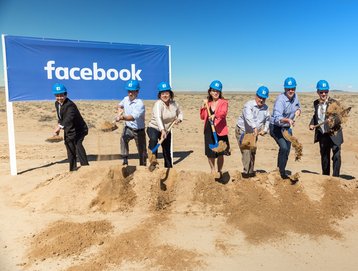Los Lunas city and state officials took part in a ground breaking ceremony this Tuesday for Facebook’s new Los Lunas data center.
Opening in 2018, the Fortis-built facility will start with a $250 million single site, but may add five more buildings.
Local opportunities
“They build fast as you see. They just announced it a few weeks ago and here they are moving dirt. This is what Facebook does. They move quickly and they have enormous impact on Los Lunas and New Mexico as a whole,” Governor Susana Martinez said, KRQE News reports.
Facebook said in a post on its social network: “Today, we’re thrilled to join our partners at the construction site of our newest data center in the Village of Los Lunas. This ceremonial groundbreaking is more than just turning the sod, but an opportunity for us to celebrate the opportunities we have to invest in this project and the local community. Thank you to those of you who’ve helped us get to this point.”
But while Facebook will invest in this project, and as a by-product the local community, the community has had to invest in the Facebook facility.
New Mexico will not collect any property taxes for the next 30 years and give tax breaks on the purchase of computer equipment, as well as potentially paying for water rights. In return, Facebook will pay an annual fee that starts at $50,000 and rises to almost $500,000.
The deal came after an extended bidding war between the states of New Mexico and Utah that saw rival state Utah offer a tax incentive potentially reaching $260 million.
Yesterday, research from policy think tank Good Jobs First criticized such bidding processes, and the low number of jobs gained by similar deals.
It said: “Later to construct its own data centers than other companies, Facebook has nonetheless sought large subsidies for every single data center it owns. The company also learned that by playing two locations against each other, it can gain expedited permitting and approvals for its data centers.”

